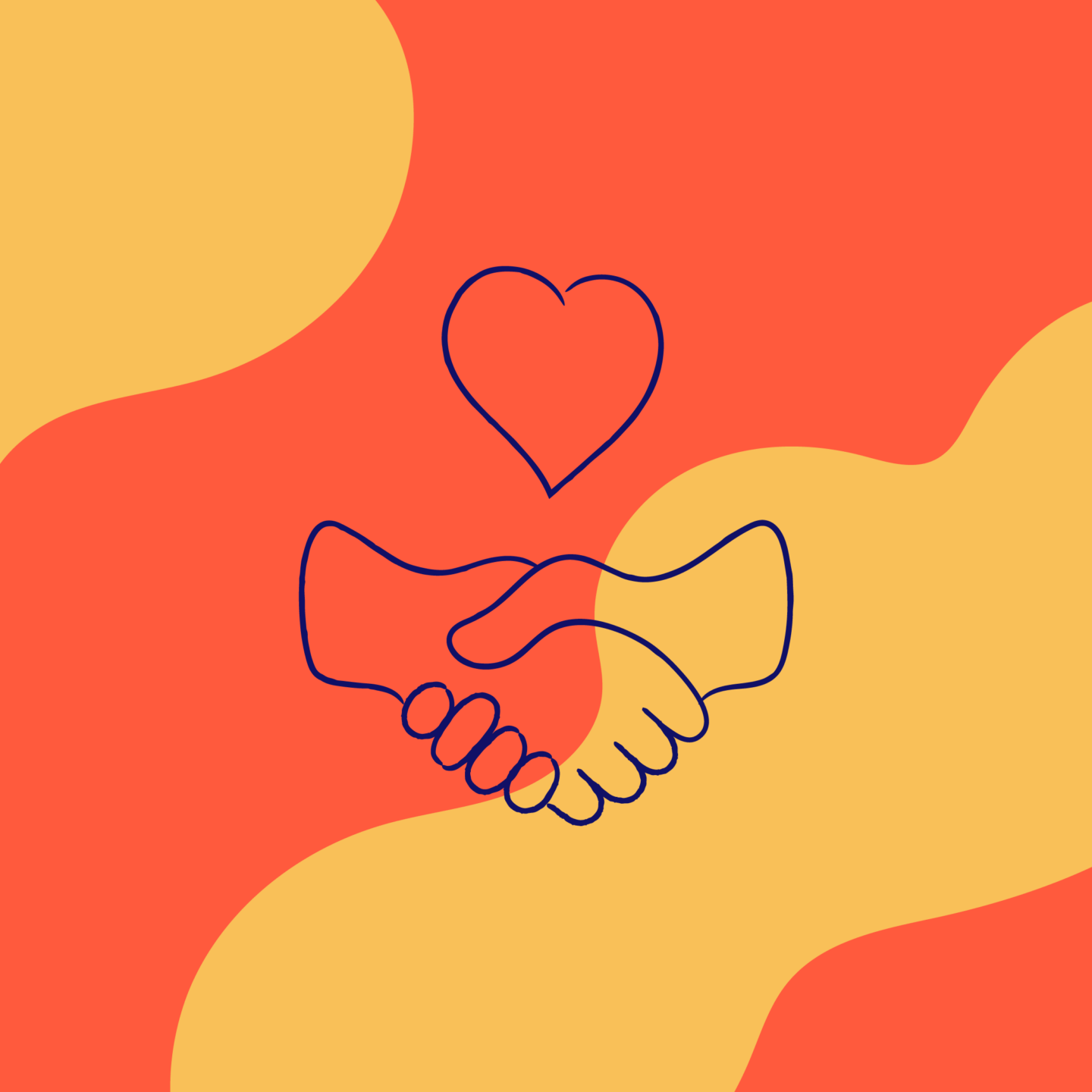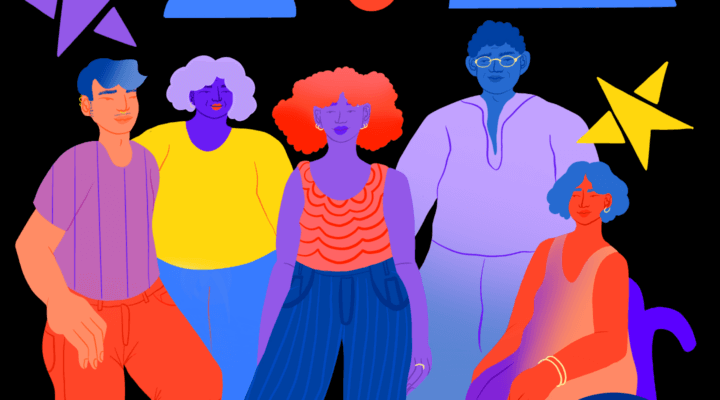Be the one to support LGBTQ+ young people through action.
The Trevor Project is the leading suicide prevention and mental health organization for LGBTQ+ (lesbian, gay, bisexual, transgender, queer, and questioning) young people. We want to create a world where every LGBTQ+ person is loved and accepted for who they are.
Familiarize yourself with key terms, opportunities for education and advocacy, and small ways to make a big impact.
LGBTQ+ Key Terms
Queer: Umbrella term used to describe someone who is a sexual or gender minority (generally, not heterosexual and/or cisgender). “Queer” has historically been
used as a slur against LGBTQ+ people, but it has been increasingly reclaimed by LGBTQ+ communities and is now used by and among some people who are LGBTQ+. Note that many folks are still not comfortable using the word “queer” or being referred to as queer, so it’s best to mirror their language while using this term.
Questioning: Refers to someone who is in the process of discovering or exploring their sexual orientation or gender identity, and who has not claimed a precise identity to use to describe these characteristics.
Lesbian: Commonly used to describe someone who identifies as a woman
whose attractions are to some other women. Some people include nonbinary people in their definition of lesbian, and some nonbinary people identity as lesbian.
Gay: Commonly used to describe an individual who identifies as a man whose attractions are to some other men. “Gay” has previously been used as an umbrella term for all LGBTQ+ people, but the more inclusive term is now the “LGBTQ+” or “queer” community.
Bisexual: Used to describe an individual who is attracted to more than one gender. Individuals who identify as bisexual need not have had equal sexual experience
with people of multiple genders; in fact, they need not have had any sexual experience at all to identify as bisexual. Historically framed as being attracted to “both” genders, bisexuality has been reframed to include attraction to people who fall outside the gender binary.
Transgender: A term that describes someone whose gender identity differs from the gender they were assigned at birth. There are a few things worth noting when considering transgender experiences:
- Transgender can be both a standalone identity as well as an umbrella term that encompasses many different gender identities, including nonbinary gender identities.
- Transgender people represent a wide range of experiences
and backgrounds, and not all transgender people have undergone a process of transitioning. Transition is unique to every person. - “Trans” is often used as shorthand for transgender.
Nonbinary: Refers to people who do not fit within the “man/woman” gender binary.
- Like the term “transgender,” nonbinary can be a standalone gender identity, or it can be an umbrella term.
- Some folks who are nonbinary may also identify as trans, and some may not.
Asexual/Ace: Used to describe someone who experiences little or no sexual attraction. While most people who identify this way desire emotionally intimate relationships, they are not drawn to sex as a way to express that intimacy.
Pronouns
One common way people express their gender identity is through pronouns. Pronouns are the words people use to refer to themselves or others, without using a proper noun. Respecting pronouns is a crucial part of affirming someone’s identity. Some pronouns that you may recognize include:
✩ They / Them / Theirs
✩ He / Him / His
✩ She / Her / Hers
✩ Ze / Hir / Hirs
✩ He / She / They (interchangeable pronouns)
When considering pronouns, there are a few things we want to keep in mind:
- People can define what pronouns work best for them; there is no objective rule of thumb for what pronouns someone can use. A person might choose not to use any pronouns at all, or just their name.
- Some people use more than one set of pronouns to describe themselves and will let you know if they want you to use them interchangeably or at specific times. Pronouns change and it is always important to mirror the language someone uses to identify themselves.
- If you make a mistake and misgender someone, please correct your mistake and share a private apology with the person you misgendered. You don’t have to go overboard — just a simple “I’m sorry” will do. Still, it is imperative that you try your hardest to both remember people’s pronouns and use them correctly.
What You Can Do
Educate Yourself
We should never stop learning, because education can help save lives. It’s important to educate yourself, so that the burden of education isn’t on the LGBTQ+ people you want to be an ally to. Luckily, there are a lot of resources that can help you know more about the LGBTQ+ community.
Here are a few places to get started:
✩ Trevor Resource Center
✩ Trevor Research
✩ Out & Equal Toolkits & Guides
Support LGBTQ+ Young People
- Be a safe space when discussing difficult topics and utilize empathetic listening practices such as reflecting language, validating experiences, staying present, being non-judgemental and expressing care, concern and encouragement.
- Use colleagues’ pronouns correctly and consistently. Model sharing pronouns in meetings, in email signatures, and on web platforms.
Advocate for LGBTQ+ People
Send a Text Message* TREVOR to 40649 to become a Trevor Advocate
Our Trevor Advocacy Team champions affirming crisis care and works to protect LGBTQ+ young people from the unique challenges that increase their risk of entering crisis. Through advocacy at all levels of government, public education, and litigation we leverage our expertise and cutting-edge research to advance protective policies, increase public support, and create the world each LGBTQ+ young person deserves.
Join our efforts to:
- Protect LGBTQ+ young people from the dangerous practice of conversion “therapy.”
- Ensure trans and nonbinary young people can access the care they need and live as their authentic selves.
- Create safe and affirming school environments.
- Ensure the nation’s 988 Lifeline is able to adequately and competently support LGBTQ+ young people in crisis.
* The Trevor Project Mobile Alerts: Advocacy Calls-to-Action. Approx 2 messages/month. Msg & Data rates may apply. Text STOP to cancel. Text HELP for more information.
Be a Visible Ally When Working With LGBTQ+ Young People
- Introduce yourself with your name and pronouns. Invite others to do the same.
- If you’re able, decorate your space with items that signify allyship. This could be a pronoun button, a flag, or a poster of an LGBTQ+ film or artist.
- Do not tolerate bullying or harassment in your space at all. If bullying
or harassment happens, enact consequences and hold the person causing harm accountable. - Talk positively about LGBTQ+ people. Even in instances where it’s not appropriate to share their identity, this can show allyship. Always condemn acts of erasure if you’re able.
- Encourage visual cues of allyship, such as ‘safe space’ stickers or rainbow flags.
Questions?
Contact The Trevor Project at [email protected]
Help us continue to provide 24/7 support to LGBTQ+ young people and empower allies to deepen their commitment through advocacy, education, and affirming content.


